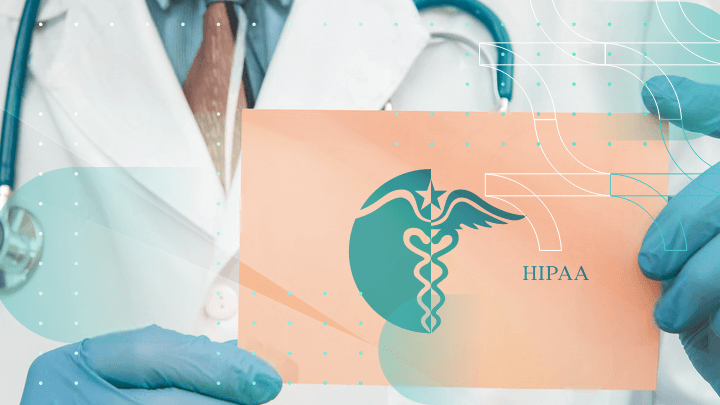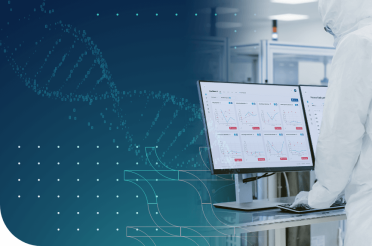Technology continues to reshape the way we access and manage medical information. Because of that, there is an imperative need for a vigilant safeguard against the breach of sensitive patient data.
Enter the Health Insurance Portability and Accountability Act (HIPAA), a cornerstone of healthcare regulations enacted in 1996 that has marked an important change across the industry. We must delve into its core principles and rules to better understand its impact on data protection, and its relevance to developers shaping the future of digital health technology.
Developers have a responsibility not only to create innovative solutions but to do so while navigating the intricate labyrinth of HIPAA compliance. This is where the symbiotic relationship between developers and HIPAA rules comes to the forefront.
The crux of the matter lies in developers’ acute understanding of the pivotal role they play in upholding the integrity of patient data. This will be the main focus of the upcoming paragraphs.
Why care about HIPAA rules?
HIPAA sets forth a rigorous framework to ensure the confidentiality, integrity, and security of Protected Health Information (PHI). PHI is a term at the core of HIPAA’s ethos that encompasses a treasure trove of patient data.
When personally recognizable data is combined with an individual’s physical or mental well-being, healthcare details, or the financial aspects related to their healthcare expenses, it is considered PHI. Whiting the realm of PHI, a comprehensive web of 18 identifiers is defined by HIPAA.
Those include:
- Personal Names
- Address (or anything that might give away the exact location of the patient)
- Specific dates (excluding years)
- Telephone numbers
- Fax number
- Email address
- Social Security Number
- Information from medical records
- Health plan beneficiary number
- Account number
- Certificate or license number
- Vehicle license plate numbers
- The device identifies and serial numbers
- Web URLs
- Internet Protocol (IP) Address
- Voice or fingerprints
- Photographic images
Each identifier is a crucial piece of the puzzle that, when pieced together, can reveal a comprehensive picture of an individual’s medical history and identity. This intricate tapestry is what HIPAA safeguards, ensuring that the sum of these parts remains shielded from unauthorized access.

Step up your HIPAA Compliance Success Strategy with expert help.
Stay ahead of regulations and avoid penalties by using BGO Software’s software specialists to assist you in achieving HIPAA compliance effectively.

What entities do HIPAA rules apply to?
HIPAA covers three main categories of entities, each playing a distinctive role within the healthcare ecosystem. These categories encompass healthcare providers, health plans, and healthcare clearinghouses, collectively forming the pillars of patient data protection and privacy that developers should be aware of.
Healthcare providers
Healthcare providers encompass a wide array of individuals and organizations that offer medical services and care to patients. This category includes doctors, nurses, clinics, hospitals, nursing homes, and other medical practitioners.
These entities directly engage in patient care, diagnosis, treatment, and the management of health-related information. Under their involvement in healthcare delivery, healthcare providers hold a pivotal role in safeguarding patients’ sensitive data and ensuring compliance with HIPAA regulations.

Step up your HIPAA Compliance Success Strategy with expert help.
Stay ahead of regulations and avoid penalties by using BGO Software’s software specialists to assist you in achieving HIPAA compliance effectively.

Health plans
Health plans consist of entities that manage and provide insurance coverage for healthcare services. This category encompasses health insurance companies, Health Maintenance Organizations (HMOs), employer-sponsored health plans, government programs like Medicare and Medicaid, and other insurance providers.
Health plans play a crucial role in financing and coordinating medical care for individuals and families. They collect and manage a vast array of patient data to facilitate claims processing, benefit administration, and premium calculations.
Healthcare clearinghouses
Healthcare clearinghouses serve as intermediaries in the healthcare industry, facilitating the exchange of health-related information between various entities. These organizations convert health data received from healthcare providers and other sources into a standardized format for efficient processing and transmission.
Clearinghouses ensure that data conforms to standardized protocols, enhancing interoperability and reducing administrative burden. By managing and transforming health data, healthcare clearinghouses assume a vital role in maintaining the confidentiality and integrity of patient information.
These three categories of entities underpin the comprehensive coverage of HIPAA, collectively working together to uphold the privacy, security, and accountability of patient health information. Their adherence to HIPAA rules and regulations serves as a cornerstone of the healthcare industry’s commitment to data protection and patient trust.
Let’s take a deeper look at the most important ones that you should be aware of.
HIPAA Privacy Rule
The HIPAA Privacy Rule safeguards patient health information by enforcing the minimum necessary principle. It mandates access controls, role-based permissions, encryption, auditing, and regular risk assessments to ensure data security and limit unnecessary disclosure.
There are 3 different requirements that you need to follow to make sure you do not break the rule of maintaining compliance with HIPAA standards.
Minimum necessary standard
You need to adhere to the minimum necessary standard by implementing a robust access control system. That system needs to enforce the principle of least privilege by ensuring that only authorized users can access the specific PHI necessary for their roles.
By strictly following this standard you reduce the risk of unauthorized exposure to PHI. This principle prevents unnecessary access to sensitive data, limiting the potential impact of breaches or misuse.
Role-based access controls
As a developer, you have to define the different user roles within your application, each with specific access privileges to PHI based on their job responsibilities. Grant access only to the information directly relevant to their tasks.
Role-based access control ensures that individuals can only access PHI that is pertinent to their job functions. This prevents overexposure to data and mitigates the chances of an accidental data breach.

Discover how to excel in HIPAA compliance.
Navigate complexities of finding a custom solution for HIPAA compliance by consulting BGO Software’s specialists who can guide your through the data protection requirements.
Data encryption
It is your responsibility to add an extra layer of protection to PHI by making it unreadable to unauthorized users even if they manage to gain access to the data. To effectively encrypt user data you need to implement strong encryption mechanisms for data at rest and in transit.
For that feel free to use protocols like Transport Layer Security (TLS) for data transformation and encryption algorithms for storing the data you need to protect securely. By focusing on using this strategy, you ensure that your application is not only compliant with the HIPAA Privacy Rule but also optimized for protecting sensitive patient health information.
All of these measures collectively create a robust security framework that fosters trust, safeguards privacy, and minimizes the potential risks associated with managing PHI.
HIPAA Security Rule
The HIPAA Security Rule focuses on safeguarding electronic protected health information (еPHI) through the implementation of rigorous security measures. It mandates the use of risk assessments, access controls, encryption, auditing, and security awareness training to ensure the confidentiality, integrity, and availability of еPHI.
Here are the 3 tools that you need to employ to make sure that you promote compliance with HIPAA’s stringent security standards:
Risk assessment
Risk assessments identify vulnerabilities and threats specific to your application’s environment. If you want to get rid of such threats as a developer it is best to utilize a comprehensive risk assessment tool that aligns with guidelines such as NIST Special Publication 800-66 Revision 1.
We recommend this tool as it educated users about the information security technology within the context of the rule and directs readers to valuable information in other NIST publications. And if that’s not enough, it helps you evaluate risks and establish a strong foundation as a developer for compliance with the HIPAA Security Rule.
Auditing and monitoring software
You have to deploy auditing and monitoring tools to track user activity, system access, and date changes. One software that you can use for this job is Splunk Enterprise Security. It offers real-time visibility into security events and user activities across the infrastructure of your application and overall system.
The software’s robust features contribute to maintaining compliance with HIPAA’s security standards and ensuring the confidentiality and integrity of sensitive patient data. Using this strategy you can detect any unusual or unauthorized activities promptly, allowing for better accountability and swift corrective actions on all fronts.

Discover how to excel in HIPAA compliance.
Navigate complexities of finding a custom solution for HIPAA compliance by consulting BGO Software’s specialists who can guide your through the data protection requirements.
Security awareness training programs
Knowing how to implement security awareness training programs is a critical component of complying with HIPAA rules as a developer. These programs provide employees and workforce members with the knowledge and understanding they need to navigate security policies and practices effectively.
By educating personnel about HIPAA compliance requirements and their roles in safeguarding electronic protected health information (ePHI), organizations mitigate the risk of unintentional security breaches. Well-informed employees are more equipped to recognize potential security threats and adopt best practices, reducing the likelihood of data breaches and contributing to the overall security posture of your application.
One example of a company that has successfully complied with all HIPAA rules is the Cerner Corporation. Cerner is a global healthcare information technology company that provides a range of software solutions and services to healthcare organizations.
The company has established a strong reputation for its commitment to maintaining HIPAA compliance and safeguarding patient data. The company regularly undergoes rigorous security audits and assessments to validate its adherence to HIPAA standards. It also provides training and resources to its employees to ensure they understand their roles in maintaining compliance and safeguarding patient data.
HIPAA Breach Notification Rule
The HIPAA Breach Notification Rule requires covered entities to report breaches of unsecured protected health information (PHI). A breach is defined as the unauthorized acquisition, access, use, or disclosure of PHI in a manner not permitted by HIPAA Rules.
Organizations must notify affected individuals, the Department of Health and Human Services (HHS), and the media of large breaches. It also needs to take the appropriate actions to mitigate harm. Breach notifications should be issued promptly, and penalties can be incurred for non-compliance, including financial penalties from state attorneys general and the HHS’ Office for Civil Rights.
Now what does this mean for you as a developer when it comes to taking actions that do not break this rule?
Implement strong security measures
Firstly, you need to gain a clear understanding of the breach notification rule, including its definitions, reporting requirements, and consequences for non-compliance. Once that is clear and out of the way, you need to develop and implement robust security measures to protect electronic protected health information (ePHI) from unauthorized acquisition.
For that feel free to use data encryption, access controls, and other technical safeguards to ensure the confidentiality and integrity of ePHI. On top of that, make sure to perform regular risk assessments to identify potential threats and vulnerabilities that could lead to a breach.
Develop a breach response plan
Create a comprehensive breach response plan that outlines the steps to be taken immediately upon discovering a breach. The plan that you design as a developer should include procedures for evaluating the breach, mitigating the impact, and notifying the affected parties.
You need to make sure that there is a system in place that makes sure everyone affected knows about the breach, even if the exact number is not yet known. Notifications should be clear, concise, and written in plain language. Notify the HHS, and if applicable, media outlets within the designated timeframes.
Keep in mind that all notification letters should explain the nature of the breach, the information exposes, actions taken to mitigate the harm on your side, and steps individuals can take to protect themselves. Send the letters through secure channels to avoid further breaches or unauthorized access.
A company that experienced a HIPAA breach back in 2015 was Anthem Inc. As one of the largest health insurance companies in the US, the breach exposed the personal and medical information of nearly 78.8 million individuals.
As a result, Anthem responded by taking the following steps:
- Responded swiftly by containing the breach, involving law enforcement and its cybersecurity experts
- Notified affected individuals
- Investigated to determine how the breach occurred and that data was compromised
- Implemented new enhanced security measures to address the problem
- Paid a $16 million fine to the OCR
HIPAA Enforcement Rule
The HIPAA Enforcement Rule establishes guidelines that aim to enforce compliance, investigation, and penalties related to violations of the HIPAA Privacy, Security, and Breach Notification Rules. Enforced by the OCR within the U.S. Department of Health and Human Services (HHS), this rule ensures that Covered Entities (CEs) and BAs adhere to HIPAA’s regulations.
The Enforcement Rule outlines the procedures for investigating violations and imposing penalties for non-compliance, aiming to hold individuals and organizations accountable for safeguarding PHI. It sets the framework for investigating complaints, conducting compliance reviews, and promoting voluntary compliance.
Assessing criminal HIPAA violations
The Office for Civil Rights (OCR) collaborates with the Department of Justice (DOJ) to assess criminal HIPAA violations and ensures adherence to privacy and security regulations through various approaches, such as investigating complaints, conducting compliance reviews, and providing education and training for compliance.
The OCR considers certain conditions before taking action on complaints:
- The violation must have taken place within the past six years.
- The complaint targets subjects obligated to follow HIPAA, like Covered Entities (CE) or Business Associates (BA).
- The complaint should pertain to an activity that is proven to violate HIPAA rules.
- The complaint should be submitted within 180 days from the point when the person filing it became aware of the alleged HIPAA violation
As a developer adhering to this rule and making sure it doesn’t come to criminal trials is quite simple. You need to adopt privacy by design by integrating privacy considerations from the start of the development process.
Always minimize the collection and storage of sensitive patient information to what is necessary.
You also need to make sure that you implement features that allow patients to control their data, including access, modification, and deletion. Now let’s take a look at the steps you can take to do that successfully.
HIPAA Patient Access Rule
The HIPAA Right of Access rule grants individuals the legal right to access and obtain copies of their medical and health records held by covered entities. This empowers patients to control their health information, fostering transparency and informed decision-making.
The rule ensures timely access, defines exclusions such as psychotherapy notes, and allows reasonable fees. Developers play a key role in creating secure systems that facilitate patient access while maintaining data security and privacy.
Secure data transmission
As a developer, implementing secure data transmission protocols, specifically HTTPS (Hypertext Transfer Protocol Secure), is paramount. HTTPS ensures that the data exchanged between users and your application is encrypted and secure.
Utilizing HTTPS involves obtaining an SSL/TLS certificate for your website or application, configuring your server to use HTTPS, and ensuring that all communication between your users’ devices and your server is encrypted. Regularly updating your SSL/TLS certificates and staying informed about best practices in encryption and security protocols is essential to maintain a secure environment for PHI.
Design user-friendly interfaces
Prioritize the design of intuitive and user-friendly interfaces for your healthcare application. Create clear navigation paths, use consistent layouts, and ensure that users can easily access and understand the functions related to PHI.
You can implement these user-centered design principles by conducting usability testing and gathering feedback from potential users. The next step is to streamline the user interface to present relevant information prominently, such as medical records and test results.
Throughout the whole process and funnel, you need to provide clear labels and instructions for users to interact with the application securely. Implement two-factor authentication, to enhance security while maintaining a seamless user experience.
Business Associate Agreements (BAAs)
Business Associate Agreements (BAAs) are legal contracts required by the Health Insurance Portability and Accountability Act (HIPAA) that outline the responsibilities and obligations of third-party entities. BAAs help ensure that business associates adhere to HIPAA regulations and maintain the security and privacy of PHI.
As a developer, you need to ensure that you have a signed BAA in place with each covered entity you work with. The BAA outlines your responsibilities in handling PHI, including security measures, breach notification procedures, and compliance with HIPAA regulations. Review the BAA carefully, seek legal advice if needed, and make sure you fully understand your obligations.
After you know your obligations, secure the PHI you handle. This includes implementing technical safeguards such as encryption, access controls, and secure transmission methods. Keep thorough documentation of your security measures, policies, and procedures related to PHI. Document any changes or updates you make to your systems or processes to demonstrate your commitment to compliance.

Whether you’re a startup, a Fortune 100 company or a government organisation, our team can deliver a solution that works for you.
BGO Software
Conclusion
Developers should still prioritize adherence to HIPAA rules and regulations due to the critical role they play in safeguarding sensitive healthcare data. Failure to comply can result in severe consequences, including hefty fines, legal liabilities, reputational damage, and loss of trust from patients and clients.
Following HIPAA ensures the security and privacy of patients’ protected health information (PHI), maintains legal compliance, enhances the reputation of healthcare applications, and contributes to the overall trustworthiness of the healthcare ecosystem.

Whether you’re a startup, a Fortune 100 company or a government organisation, our team can deliver a solution that works for you.
BGO Software










